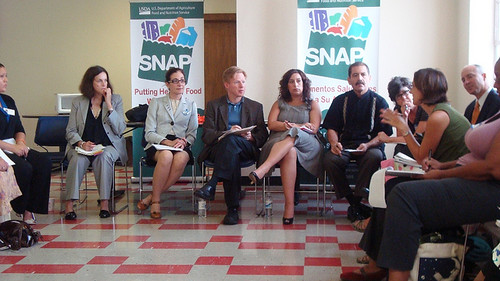
Chicago in August concluded our USDA Community Roundtable tour, where our Food and Nutrition Service and Center for Faith-Based and Neighborhood Partnerships met with almost 100 community and state partners to discuss how to improve access to SNAP at a time of growing need for food throughout the country. There my colleague Max Finberg, Director of the Center, and I met with wonderful people all over the city dedicated to fighting hunger. From the South Side to the West Side, we shared ideas with churches and other faith-based organizations, community advocates, food banks, outreach workers, school districts, community hospitals and clinics, and our state partners to discuss how to improve access to SNAP and our other fourteen USDA nutrition assistance programs.
While communities like Chicago do incredible work to feed the hungry, the prevalence of food insecurity in Chicago is 19.6%. This means many households are still struggling to put food on the table, but we were inspired by the many Chicagoans who are doing something about it.
Every Wednesday morning the St. Columbanus Parish distributes groceries to 500 people. Catholic Charities serves 6,000 mothers and children every month at the city’s largest WIC clinic and market. The Iman faith-based community health clinic is transforming the South Side through a network of volunteer doctors. The Illinois Hunger Coalition is working with the state as caseload continues to increase. St. Anthony’s, a community hospital, reaches out to seniors and immigrants. The Chicago Greater Food Depository enrolls people in SNAP electronically by providing critical one-on-one support.
All in all, it has been a privilege to meet communities from coast to coast who are making the difference. And knowing that SNAP helps more than 40 million people put food on the table, and can help millions more, makes us grateful.
